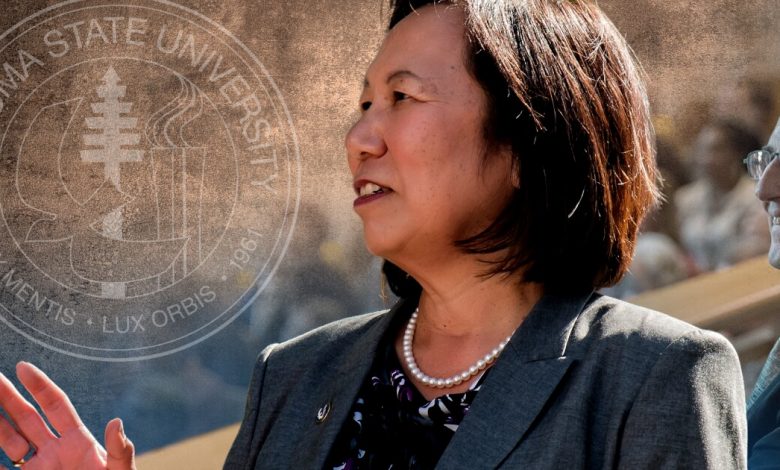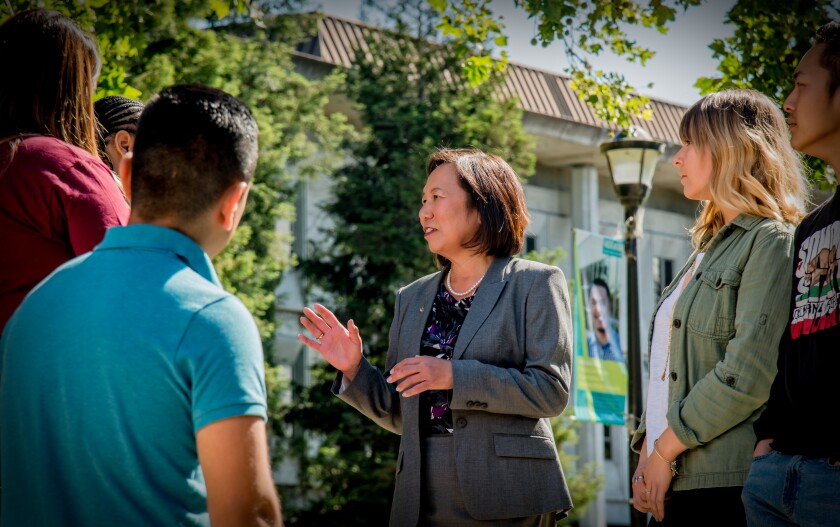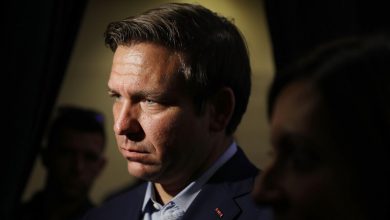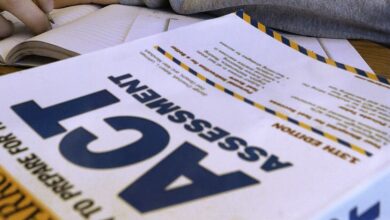The Provost Reported the President’s Husband for Harassment. Now It’s Complicated.

[ad_1]
Around 4 a.m. on April 16, Patrick McCallum, a higher-education lobbyist and the husband of Judy K. Sakaki, president of Sonoma State University, fired off an email to family members and friends. Days earlier, the Los Angeles Times reported that the California State University system, which includes Sonoma among its 23 campuses, had paid $600,000 to settle a claim with Sonoma’s former provost, who said that Sakaki had retaliated against her for reporting harassment allegations against McCallum. The revelation thrust Sakaki into a larger controversy at Cal State, which has been under steady criticism of late for its handling of sexual-harassment allegations.
For days, McCallum had been in a veritable bunker, saying little about the charges brought by three women, who said that he had stood too close, run his fingers through a woman’s hair, and generally been “creepy,” “disgusting,” and “pervy,” the Times reported. McCallum denied that he had harassed anyone, but said in a statement that he was “deeply sorry that my words and actions hurt people, were perceived as disrespectful, and made some uncomfortable.”
The optics weren’t good. McCallum and Sakaki had, in January, signed an agreement with Lisa Vollendorf, the former provost, hoping to quietly close the book on what had been a tumultuous partnership between the president and her erstwhile No. 2. Neither side, under the settlement, had admitted any wrongdoing. But McCallum knew that he and his wife were losing the battle in the court of public opinion, he told The Chronicle in interviews over recent days. Losing? They weren’t even fighting, he surmised.
By this time, Sakaki had assembled her own crisis cabinet, including a lawyer and a public-relations specialist. Everyone was telling McCallum to keep his mouth shut. Couldn’t he tell his side of the story to a few friends and family members? Sure, the lawyer said. But no one envisioned that McCallum would write a rambling, 1,200-word, error-laden screed and email it to 15 people.

Courtesy of Patrick McCallum
McCallum’s email laid out a different story than what people had read in the newspapers. As president, Sakaki had regularly fielded complaints about Vollendorf, whom people on campus described as abrasive, retaliatory, and disrespectful of others’ opinions, McCallum wrote. Just a few months after Vollendorf started at Sonoma State, Sakaki had said the provost was “the worst hire of her career,” McCallum wrote. “Even the chair of the accreditation visit told Judy she had a problem with Lisa and should fire her,” McCallum told his confidants. The implication was clear: Vollendorf hadn’t been driven out of the job by a retaliatory president, as she had claimed; she was bad news from the jump, and the charges against McCallum had been designed to “get Judy fired.”
Vollendorf did not respond to an interview request. Her lawyer, Pamela M. Sayad, said, “The settlement agreement certainly speaks for itself. You don’t pay that kind of money, and all the individuals involved don’t sign it, if there wasn’t misconduct or wrongdoing, which there was.”
About 30 minutes after McCallum sent off the email, he forwarded it to his wife, her lawyer, and her communications specialist. No one was happy. The email was potentially defamatory. To the extent that it purported to share Sakaki’s private musings with her husband, it could implicate the president, too. Within a day, The Press Democrat, a newspaper in Santa Rosa, Calif., had gotten hold of the email and published it in full.
That evening, Sakaki mentioned the prospect of a marital separation, McCallum said. “Judy’s attorney said to her, ‘If you want to keep your job, you’re going to have to deny and separate,’” McCallum said. The next morning, Sakaki showed her husband a draft statement announcing the couple’s separation, he said.
“She said, ‘This is a statement I’m making to the faculty,’” McCallum said. “I asked her to edit it, and she made one little, small edit. But she wouldn’t take my edits. And I said, ‘You’re making a mistake; this isn’t going to help you.’ She says, ‘No, I think it will, and I need time. I need time to heal, and separation.’ And then it made me angry that people were going to put me under the bus.”
I made the decision to separate because our relationship had become toxic, and I could no longer live with him.
In a leadership crisis that blends indistinguishably the personal and professional, this moment, as told by McCallum, stands out as particularly illustrative. A university president, under fire for how she responded to harassment allegations against her spouse, gave her husband an advance peek at a press release announcing their separation; and that’s how her husband said he found out it was actually happening.
“I read it, and I go, ‘Holy shit, she’s serious,’” McCallum said. “She showed it to me, and I was shocked, and really, really, really hurt. And I asked her not to do it, and she said, ‘No, I’m doing this, and I need time.’”
Sakaki declined an interview request. Her spokesman, however, provided The Chronicle with a statement from Sakaki about McCallum’s characterizations of their separation. “What Patrick is saying is simply not true,” the statement says. “I made the decision to separate because our relationship had become toxic, and I could no longer live with him.”
On April 18 the president issued a statement announcing the couple’s separation. “These past few days have been extremely difficult,” the statement began. “I am now faced with a challenge that I never thought I would need to confront: disavowing the words and actions of my husband, Patrick McCallum.” Sakaki said McCallum’s email to friends and family members was “inaccurate and unauthorized.” She had “made the difficult personal decision to separate from Patrick.”
“I had approached this matter as if he and I were on the same team, with similar interests,” Sakaki wrote, “but it is clear to me that this is no longer the case.”
“We have each other — that’s the most important part,” McCallum later told the San Francisco Chronicle. “We’re mad in love with each other already, but an experience like this even makes us closer.”
The story of the couple’s harrowing escape is branded in the campus’s collective memory. The Tubbs Fire, which demolished their home, raged across California’s Wine Country that fall, destroying 5,600 structures and killing 22 people. For Sakaki, it was a moment of private trauma that became an important part of her public identity. It linked her in a visceral way to a regional disaster that would usher in more problems for the university. Many have blamed the fires for Sonoma State’s declining enrollment, a problem that would be exacerbated, years later, by the pandemic. On a more personal level, observers said, the fire appeared to change Sakaki profoundly.
In her first year, Sakaki was viewed as a leader of great promise, filling out her cabinet with new people and focusing on the recruitment of more diverse students. She pivoted away from what some perceived to be the “country club” image of Sonoma State that had been cultivated by her long-serving predecessor. The new president had a powerful story, too. She is the first Japanese American woman to lead a four-year public university in the United States. Sakaki’s parents were confined to an internment camp during World War II, and she is a first-generation college graduate. A product of the Cal State system, Sakaki earned bachelor’s and master’s degrees from the East Bay campus, in human development and educational psychology, respectively. She holds a doctorate in education from the University of California at Berkeley.
After the fire, though, Sakaki appeared to many to shift her focus away from campus and toward rebuilding her life. This was understandable, but not without consequence. “That created something of a power vacuum, because the president was just not there,” said Laura A. Watt, who served as faculty chair from 2018 to 2020. “And the provost happily moved right into that.”
Vollendorf’s tenure at Sonoma State began in July 2017, about three months before the fire destroyed Sakaki’s home. There was some expectation on campus that Vollendorf, who had previously been dean of San Jose State’s College of Humanities and the Arts, would provide an academic balance to Sakaki, whose administrative background was in student affairs. “She was clearly going to be a very strong provost,” Watt said, “very forceful.” Sakaki, by contrast, was known to “lead from behind,” Watt said, and seemed at times almost too concerned with preserving a “team” environment.
Historically, Sonoma State’s faculty chair held regular one-on-one meetings with the president and the provost, Watt said. But when Watt’s tenure as chair began, in the fall of 2018, Vollendorf told her that “we’ve decided” that the provost and president would meet jointly with the chair. Watt said she was uncomfortable with the change, because it meant that the provost — “the boss of the faculty” — would always be listening when the faculty chair had an audience with the president.
The shifting power dynamics at Sonoma State were further complicated by the ambiguous role of Sakaki’s husband. Officially McCallum was a “volunteer,” but he knew just enough to drive people crazy. Collaborative Brain Trust, a company McCallum founded, had developed hundreds of strategic plans for colleges. Given his background, McCallum “offered” to help Vollendorf with a new strategic plan, he said in his email last month to family members and friends. But Vollendorf responded “angrily,” McCallum wrote, and told him, “I don’t need your help.”
I am more knowledgeable about best practices, for student success, accreditation, strategic planning, and coaching than probably 99 percent of spouses.
“I am more knowledgeable about best practices, for student success, accreditation, strategic planning, and coaching than probably 99 percent of spouses,” McCallum said in an interview. “And having too much knowledge in this case is probably a problem.”
For all of his experience in higher education, McCallum said, he had no “manual” for being a college president’s husband. He had learned to hold his tongue, he said, in part at Sakaki’s urging. She had told him that he was too trusting of people and that this could create trouble.
At some point, McCallum attended a workshop for presidential spouses hosted by the American Association of State Colleges and Universities, which he found helpful. But, on at least one occasion, he “blew it,” McCallum said. He had experience as a fund raiser and fancied himself quite good at it. Thinking he could be of help, McCallum provided “20 different” fund-raising or grant leads to Gordon McDougall, then the university’s director of advancement.
“He didn’t respond to one of them,” McCallum said, “and I blew up at him: ‘I’m not paid; you’re paid. I’ve given you 20 leads. You didn’t follow up with one of them, Gordon? I mean, what are you doing?’”
In hindsight, McCallum said, he was out of line. “That’s not the role of a spouse, and I made a mistake. I was accurate, but I should have never said it.”
McDougall, who stepped down in 2020, declined an interview request. But he told the Times that he had shielded women on his team from McCallum because “there were complaints of inappropriate touching and comments,” and that McCallum had made women “uncomfortable.”
McDougall once observed McCallum behaving in what seemed like an overly familiar way with Vollendorf, he told The Press Democrat. In September 2018, during an event at the campus’s Green Music Center, McDougall said he witnessed McCallum brushing Vollendorf’s hair away from her face. “I wouldn’t do that with too many women that I know except for my wife,” McDougall told the newspaper. (McCallum denies brushing anyone’s hair, including Sakaki’s.)
To hear McCallum tell it, his missteps as a presidential spouse gave Sakaki’s critics the ammunition they needed. “It pissed him off,” McCallum said about losing his cool with McDougall over the fund-raising leads. “He was already in one of the camps against Judy. He was already there. But when I did that, it really pissed him off.”
McCallum is right about one thing. He definitely pissed people off.
During a November 2018 meeting of the university’s executive committee, of which the president and provost are members, a student-government representative pressed Vollendorf for greater clarity on how the university responded to wildfires. What considerations were weighed in deciding whether to remain open or to close? Could students be more involved in making the decision when an emergency arose?
Vollendorf became defensive, snapping at the student, according to three people who attended the meeting. “She definitely raised her voice, but I wouldn’t say she was yelling,” the student, who asked not to be identified, wrote in an email to The Chronicle. “Overall she was dismissive to all of my questions. She was clearly frustrated with the whole situation but was overall rude.” The student said that he and others there had “felt her reaction was unprofessional.” (Sakaki was not present.)
Watt, the faculty chair, was disturbed by the exchange. It was one thing to tangle with a colleague, but this was a student. A line had been crossed. “My mouth was on the floor,” said Watt, who retired last June and now lives in Iceland. “My God, I can’t believe this is happening.” Watt contacted Sakaki.

Courtesy of Sonoma State U.
“I said, ‘The three of us need to meet and talk about this, because this is not tolerable,’” Watt said. “‘You can’t treat people this way.’” The three met on November 21, 2018, the day before Thanksgiving, Watt’s records reflect. Watt said she has little memory of the meeting, other than that it was uncomfortable. But “there was very little change in terms of the provost’s attitude or behavior,” Watt said.
Shortly thereafter, in December 2018, Vollendorf reported three women’s harassment allegations against McCallum to the chancellor’s office. Before doing so, she consulted with Joyce Lopes, who, as Sonoma State’s vice president for administration and finance, oversaw risk and Title IX. Lopes, who has since left Sonoma State, advised Vollendorf to forward the information to system officials rather than to the campus’s Title IX office. “The rationale was: Send it to the chancellor’s office, where there is a separation, where there isn’t the power differential.”
The complaints, as described by records obtained by the Los Angeles Times, alleged that McCallum had talked about his sex life, that he was “persistently flirtatious,” and that he had grabbed an employee “by the arm so she was forced to stay close to him,” the newspaper reported. Looming over all of those concerns was another fundamental question about McCallum’s role and his wife’s judgment: Why was the president’s husband up in everyone’s business, and why was Sakaki allowing it?
One of the complainants, who asked not to be identified, told The Chronicle, “This man is perpetually in my workspace. No other industry does this. It’s weird. It’s problematic.”
McCallum, who is 68 years old, saw it differently. He is a gregarious person, he said, and he stands close to people because he has been deaf in his left ear since birth. He described himself as something of an avuncular presence on campus, chatting people up about areas of mutual interest.
One of those areas of interest is art. Before the fire destroyed McCallum and Sakaki’s home, in 2017, the couple had decorated it with artwork from a collection of about 450 acrylic, mixed-media, and watercolor images that had been donated to the university by the Benziger family. When the house burned down, nearly $85,000 of that art went up in smoke, the Times reported. It wasn’t long, though, before McCallum asked an employee if the couple’s new home could be decorated with more artwork from the collection. When the employee resisted, McCallum pushed back, suggesting that the decision be taken “to the cabinet,” the university’s leadership team.
I sleep with the head of the cabinet, so I basically am on the cabinet and get a vote.
According to the Times, citing records associated with the case, a top university official said she had overheard McCallum telling two women on the staff, “I sleep with the head of the cabinet, so I basically am on the cabinet and get a vote, and I vote for the art,” the newspaper reported. McCallum denied having said that, but admitted he had been “pushy.” McCallum’s alleged comment about sleeping with the head of the cabinet was mentioned in the allegations Vollendorf reported to the chancellor’s office. The provost, according to the newspaper, reported that staff members had “found Mr. McCallum’s statements connecting sex, power, and influence to be offensive and disturbing.”
(The Chronicle has reviewed public records associated with the case, which California State provided, but not the additional documents the Times reported on.)
McCallum was not in the meeting with White, but said Sakaki told him about it at dinner that night. The chancellor did not identify the complainants, McCallum said. Still, Sakaki and her husband immediately suspected Vollendorf’s involvement, he said. Discussions were already underway about replacing the provost, McCallum said. But White had told Sakaki to hold off on firing her, McCallum said. According to McCallum, White said, “‘By the way, your movement on Lisa is gonna have to stop.’”
It was “easy to figure at that point” that Vollendorf was involved in the complaint, McCallum said. “We were 90 percent sure she was the person.”
The couple’s early suspicion of Vollendorf’s role, which has not been previously reported, calls into question the core of Sakaki’s public defense against allegations that she retaliated against Vollendorf for reporting her husband. In a speech to the Academic Senate late last month, Sakaki said that it would have been impossible for her to retaliate against anyone because she was “not informed about any allegations” until “one year” after the allegations were made, which would mean she learned of them around December 2019. (Vollendorf and Sakaki had signed an agreement on November 22, 2019, that set out a timeline for the provost’s resignation.)
“Knowing the timing of events,” Sakaki told the Senate, “should make clear that I was in no position to retaliate against anyone. Nor would I, even if I could.”
Cal State officials confirmed that “President Sakaki was informed of the allegations” by White in April 2019 — months before Vollendorf signed the agreement to resign. Sakaki’s personal spokesman, however, pushed back forcefully against the notion that Sakaki had learned of the allegations then. “This is false and we certainly dispute it,” Larry Kamer, the spokesman, wrote in an underlined email. “The chancellor’s office did not provide specific information about individual allegations or complaining parties in that meeting.” (Nothing in Sakaki’s statement to the Senate suggested such granularity. She said she did not know about the allegations at all for a year.)
Unspoken in Sakaki’s public defense is the argument, as advanced by her husband, that the president and provost had had a difficult working relationship virtually from the start. The existence of tensions between the two, however, does not negate the possibility of retaliation. “There is never any perfect supervisor relationship with an employee,” said Sayad, Vollendorf’s lawyer. “There always are issues, but there was nothing significant that pulled these people apart until after Sakaki was notified about my client’s complaints about her husband.”
According to Vollendorf’s claim, Sakaki immediately “began a campaign of retaliation” after she spoke with the chancellor in April 2019. She demanded that Vollendorf undergo coaching and limited the scope of the provost’s duties, according to the claim. Lopes, the former vice president, told The Chronicle that she had observed firsthand what appeared to be a change in Sakaki’s treatment of Vollendorf. Lopes “noticed Judy started going around Dr. Vollendorf,” she said in an email, “meeting directly with Lisa’s direct reports, not including her in meetings, taking responsibilities away from her, and then deciding that she just couldn’t work with Lisa at all. This was a pronounced difference from how she had worked with Dr. Vollendorf in the past.”
Under their agreement of 2019, Vollendorf had said she would step down as provost no later than June 30, 2020, which she did. Sakaki had agreed to serve as a positive reference for Vollendorf. Both had agreed not to disparage each other and to describe one another’s work in a “respectful, positive, and professional” manner. But Sakaki did not live up to her end of the bargain, according to Vollendorf’s claim. On February 1, 2021, “concrete evidence emerged,” Vollendorf claimed, that Sakaki had defamed her and interfered with her job prospects. (Sayad said that Sakaki had violated the agreement in a conversation with a recruiter.)
Kamer, in an email to The Chronicle, said, “Dr. Sakaki did not retaliate against Dr. Vollendorf. This matter was investigated by CSU. Those were the findings.” Michael Uhlenkamp, a spokesman for Cal State, echoed the sentiment. “The CSU denies that any acts of retaliation occurred,” he wrote in an email to The Chronicle.
As it turned out, it would be more difficult to explain than anyone fully understood at the time. In February, five weeks after McCallum and Sakaki signed the agreement, Joseph I. Castro, who had succeeded White as chancellor, resigned under criticism of his handling of a separate sexual-misconduct claim from years earlier. During his tenure at Cal State-Fresno, where Castro had been president, he agreed to give a plum payout and a glowing reference to an administrator who had been found responsible for bullying and sexual harassment. There was a growing public consensus that Cal State had a problem with its handling of misconduct, which set the table for the Sonoma State story to be even more explosive than it might otherwise have been.
When the news broke of the Vollendorf settlement, Sakaki appeared to be potentially complicit in a seedy system of backroom deals, this one involving her own husband’s transgressions. Nothing could be further from the truth, she would tell the Senate.
“It continues to disappoint me,” she said, “that the very same people who accuse me of looking the other way or covering up bad acts have apparently given no thought to how deeply offensive I find this behavior, because I have experienced it firsthand.”
To be sure, the president has her supporters, and some professors detect racial and gender bias in the attacks that have come her way. But Sakaki was already on shaky ground with some faculty members, who have criticized her for budget problems and enrollment declines, among other issues. Last week the Senate passed a vote of no confidence in her leadership, and some state lawmakers are calling for her to resign.
As for Vollendorf, the former Sonoma State provost is slated in July to assume the presidency of the State University of New York’s Empire State College.
The fallout for McCallum has been swift and severe. He lost a lobbying job with a trust that was created to compensate victims of California wildfires. He is “off the list,” he said, of a climate-change group he had hoped to join. Many of his male friends have cut off communication with him, although McCallum said he finds it “interesting” that female friends have not. Days after Sakaki announced their separation, McCallum was injured in a hit-and-run accident on his way to Sacramento, where he was looking for a place to live, he said. Suffering from a severe concussion, he hired a craniosacral therapist for treatment. When the therapist read an article about the harassment allegations, McCallum said, she didn’t want to work with him anymore.
In large part, McCallum sees his story as a cautionary tale. Presidential spouses need more training to understand their roles and define their proper lanes, he said. Many complaints, like those made against him, could be more effectively resolved through a “restorative justice” approach than through a Title IX investigation, McCallum said. But that’s not what he thinks the complainants really wanted. “My sense is, they used me and Title IX to get at Judy, and they were successful.”
Recently, McCallum said, he learned from Sakaki about a fourth woman whom he had made uncomfortable. He was troubled by this, he said, because she wasn’t “in any camp that I knew” that was out to fire Sakaki. “I know that I never hugged her,” McCallum said. “I know that for a fact. But I probably asked questions that were — the way I asked the questions might have made her uncomfortable. Publicly there was an apology that I gave to the press, and I apologized to any woman I made uncomfortable; I was thinking of her.”
Last week McCallum was on the Baja California peninsula, in Mexico, where he participated in a workshop hosted by the Modern Elder Academy, which describes itself as “the world’s first midlife wisdom school.” He meditated, read books, and stared at the ocean. He was in quite a state, he said, before he arrived. A couple of weeks earlier, he had had a dream. In it, he said, he was in court, on trial for a horrible crime. “I’m saying, ‘I never did it. I never did it.’ And no one stands up for me,” McCallum said. “I get thrown in jail.
“I knew I did nothing wrong,” he continued. “And no one was stepping up to defend me. And no one would allow me to defend myself. And I was stupidly again trusting them, and I shouldn’t have. Judy is right. Trust was my biggest mistake.”
[ad_2]
Source link






